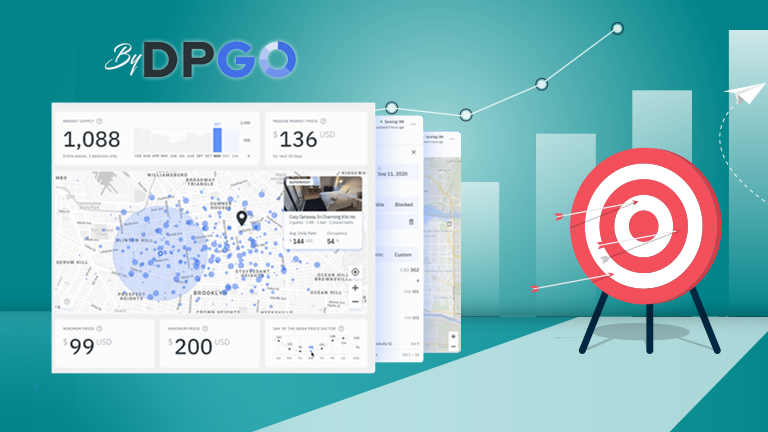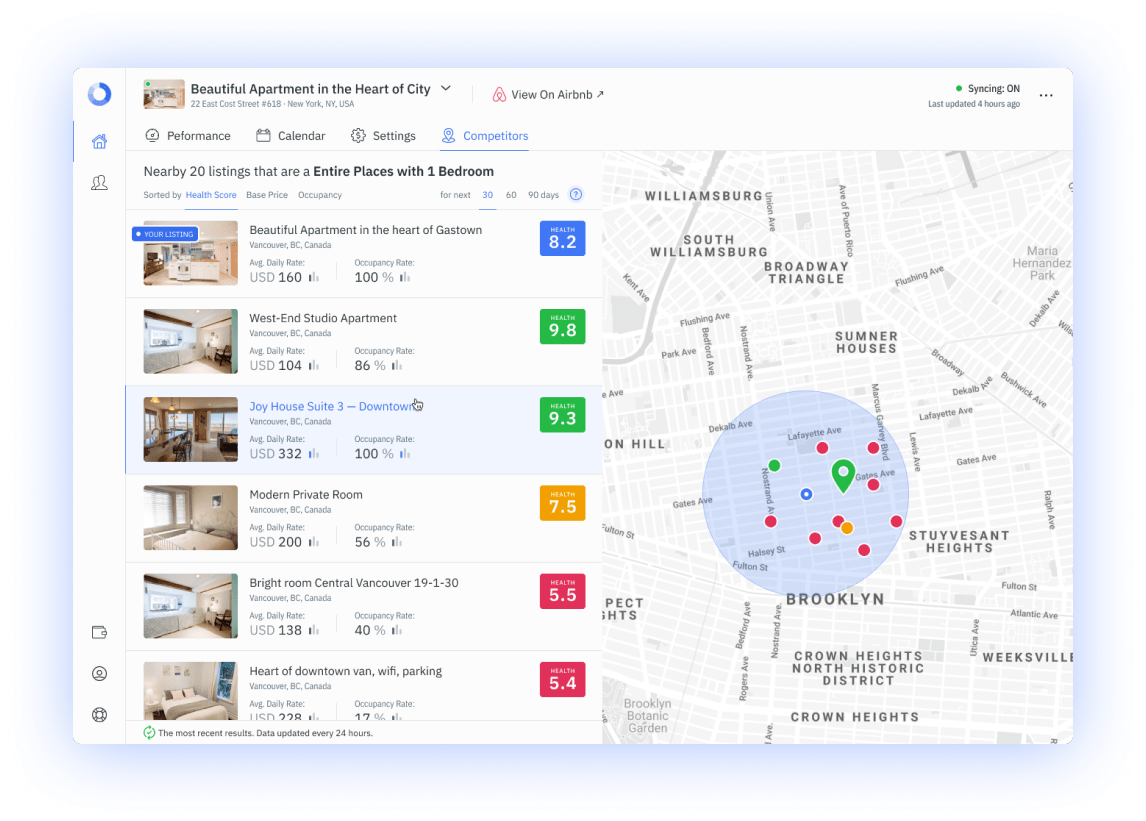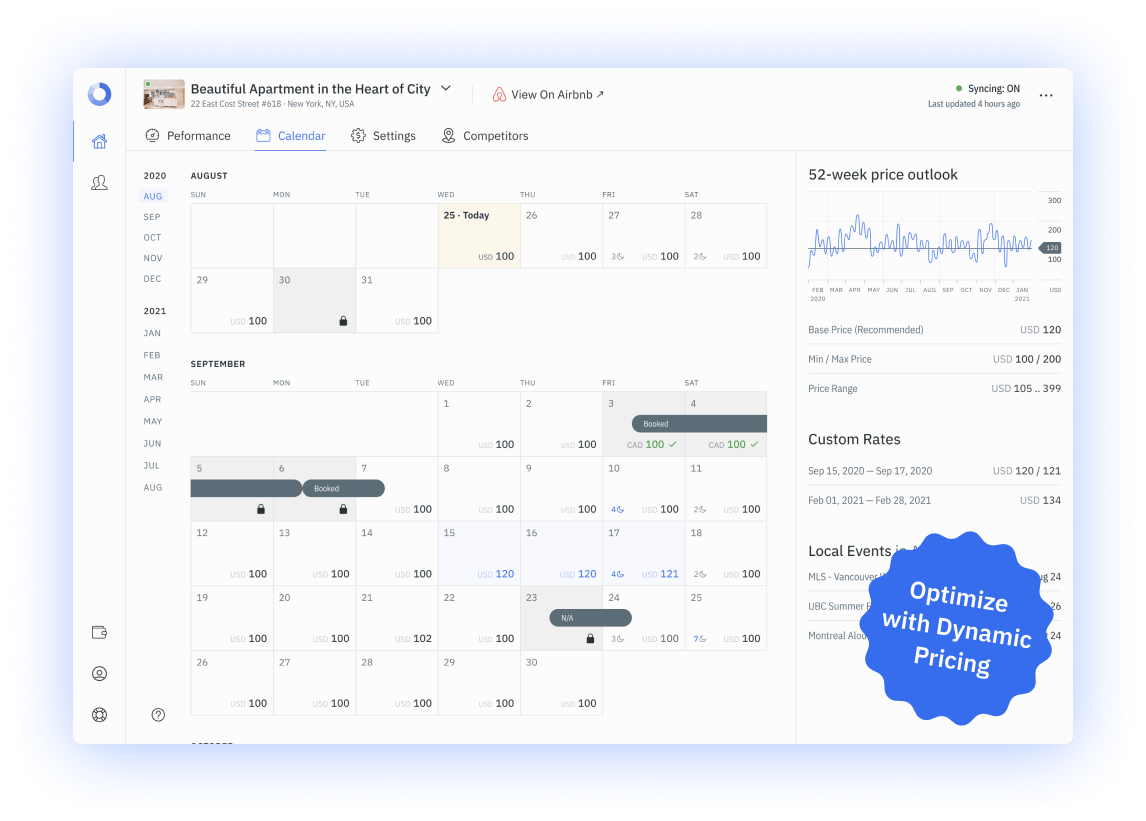

Every STR host, owner, or manager is constantly on the lookout for ways to increase their booking rates. More bookings equal more money, and that’s the name of the game for hosts in the industry. Here are a few pointers on how to increase your booking rates with better pricing.
There are so many ways to help give your booking rates a nice boost, but none will make a more significant difference than optimizing your pricing. And pricing is a much more complex subject than you might think. Theoretically, every day that the market changes, your prices could be further optimized to attract more bookings.
STR hosts, owners, and managers need to start viewing the market and pricing differently. Prices can never be static. And if they are, you risk losing out on a serious portion of your potential income.
Let’s break pricing strategy down into its three main components: price limits, discounts, seasonal changes, and weekend adjustments. If you develop an optimized approach to each of these pricing concerns, then you’ll be well on your way to the most profitable year of your business career!
Establishing a rough pricing framework should be your first step. It would help if you established a minimum price. Without a minimum price, you run the risk of losing money, even when you secure a booking.
To establish a minimum price, try to ascertain your running costs in addition to any mortgage repayments or the like, and determine the lowest value that you can accept to confirm a booking.
When using dynamic pricing, maximum prices are slightly more critical than when you determine your own daily rates. However, keeping a rough maximum figure in mind may help you avoid scaring off potential guests. No customer will choose your listing if your prices are inexplicably considerably higher than the others in your local market.
 Discounts
DiscountsOffering discounts is a great way to encourage bookings and show that your pricing is flexible. Whether for long-term, last-minute, or off-peak bookings, discounts should be in the arsenal of any experienced short-term rental host.
Long-term discounts encourage longer bookings. Choose to discount stays over one or four weeks. Guests will appreciate the price reduction, and you might even create a return booking out of it!
But how can offering discounts bring in more money? Well, by offering a discount, you encourage guests to stay longer, and even at reduced rates, you’re earning money on days that you may not have had you not offering the discount.
Last-minute discounts allow hosts to encourage bookings on open calendar dates that are fast approaching. By lowering the prices, even by a mere 5-10%, can make a real difference. Industry experts observed last year that the majority of STR bookings were made within one month of check-in. Take advantage of this last-minute booking rush and distinguish yourself from your competitors!
Your pricing strategy needs to take seasonality into account when determining daily rates. If you fail to consider seasonality when choosing prices, you risk missing out on bookings entirely or leaving more money on the table than you needed to.
As a rule of thumb, your prices should be higher in peak season and lower in the off-season. When demand is higher, you’re more likely to win bookings even with higher rates. On the flip side, when demand is low, the cheapest listing often gets the most bookings. This is assuming that competitors do not offer any additional amenities.
There are exceptions to these rules. The winter season is the off-season for most of North America, but the festive period is one of the busiest times in the STR industry. Pay attention to these pockets of high booking volumes. They warrant their own pricing strategy.

Try to start thinking of weekends as peak periods. Weekends need a pricing strategy that is different from that of the rest of the week. Savvy hosts also opt to change their minimum stay requirements for weekend bookings, and by increasing prices by as little as 5%, you can ensure a slightly higher secured rate.
As weekends are the most popular non-holiday travel period, it leaves your mid-week bookings sadly lacking in appeal. A fair number of our users have opted to increase their weekend prices but decrease their mid-week prices to stimulate a booking.
You don’t necessarily need to increase your weekend prices if you don’t want to, but if there is ever a time you’ll get away with higher prices during off-peak season, it’s weekends.
Generally speaking, the prices of your listing should follow that of your fellow competitors. It is a sad but true fact that most Airbnb users consider price to be one of the most important factors when they determine which property to book. A few dollars here and there won’t matter much, but a difference of $20 per night and higher may lead to your potential guests considering cheaper options.
Simply put, dynamic pricing is the solution. Without the sort of in-depth market data that dynamic pricing companies can source, hosts are left in the dark on what the market is doing at any given time.
You need a pricing tool that combines an extensive range of data insights, includes unique features, offers automation, and comes complete with an algorithm that improves over time.
DPGO has all of this and more. To sign up for DPGO dynamic pricing, visit their website.


